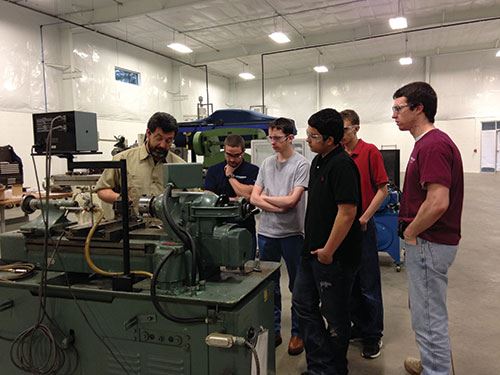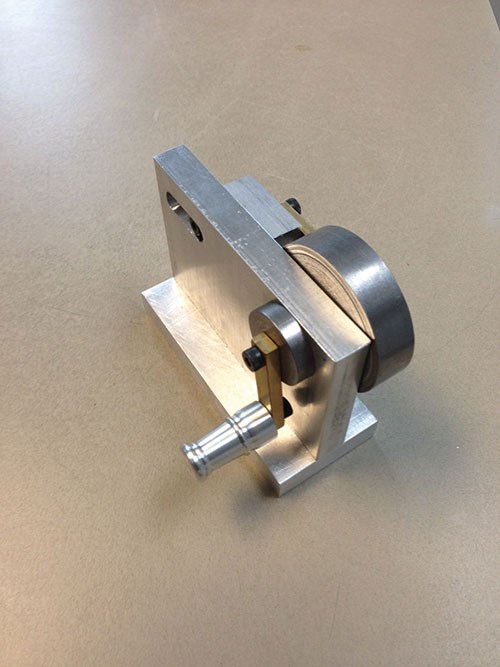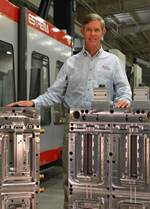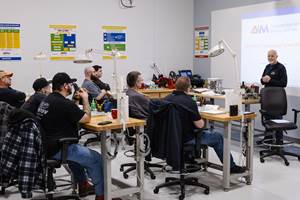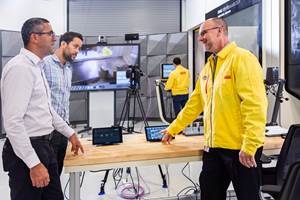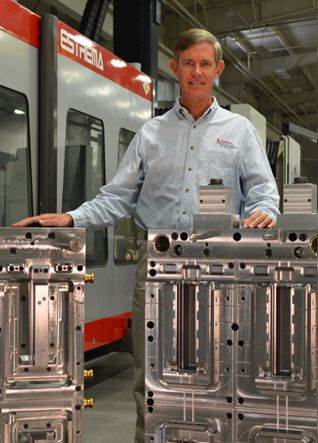Tapping into Talent
Seven North Carolina manufacturers—including one moldmaker—hope to build their future workforces through European-style apprenticeships.
As this article began to take shape, Superior Tooling opened its doors to six local high school students who could very well be the first in a long line of prospective new hires. For a few days after school during the week of March 17, these kids had the opportunity to experience the moldmaking trade firsthand. Closely monitored by Superior’s most seasoned personnel, these sessions weren’t just about spreading the gospel of manufacturing. Much of that work had already been done. By that point, these kids had expressed serious interest in building a long-term career by working with their hands, as had a number of others who didn’t make it that far. At best, only two of the six will get a chance to pursue that opportunity this summer, and they’ll still have a long way to go before the shop’s potentially substantial investment in their training pays off.
Nonetheless, company President Robbie Earnhardt says he is convinced that the time and cost will be more than worth it. After all, the organization that attracted the students in the first place, the North Carolina Triangle Apprenticeship Program (NCTAP), is based on a proven model that has been delivering results in another portion of that state for nearly 20 years. That model, in turn, traces its roots to places like Germany and Switzerland, where apprenticeship has played an outsized role in ensuring a bountiful pool of skilled labor since the Middle Ages.
Earnhardt also believes in the program for a more personal reason: He got his own start as a teenaged apprentice in a small job shop. Like many of the aspiring NCTAP students, he’d decided a four-year university degree just wasn’t for him. Apprenticeship provided a viable, alternative outlet for launching a successful career, one that would eventually lead him
to found Superior Tooling in Wake Forest, N.C., in 1985. He fully expects NCTAP to provide a similar outlet for local students today. However, he says their experience will be much different from his own—and potentially much more rewarding.
A Proven Model
That’s primarily because NCTAP offers something Earnhardt’s own apprenticeship lacked: structure. Beginning this fall, the two high school seniors whom Superior Tooling expects to formally accept as apprentices will split their time between the classroom and paid work at the shop, just as he did as a teenager. The difference is that these students’ training won’t be limited to the shop floor, nor to skills specific to moldmaking. After graduating high school, they’ll continue their formal education at Wake Technical Community College. For the next three years, they’ll spend one day a week taking courses in electronics, hydraulics and other general disciplines. On the other four weekdays, they’ll be at the shop following a pre-set training plan with measurable outcomes—a stark contrast to the informal mentoring that characterized Earnhardt’s experience.
The principle players of NCTAP began to come together in early 2013, says Vice Chairman Kent Misegades. That’s a quick start for a program as involved as this one, he says. However, he’s quick to emphasize that much of the groundwork had already been laid. For that, he credits Apprenticeship 2000, a similar initiative that has been providing European-style apprenticeships combining practical and classroom education since 1996. (Steve Rotman, president of Ameritech Die and Mold, recently commented on his success with Apprenticeship 2000. Click the link under "editor's picks" at the top right of the page to learn more.)
Since then, this Charlotte-area program has graduated 72.5 percent of its apprentices, says Walter Siegenthaler, co-founder. In contrast, the University of North Carolina’s 16 campuses had a four-year graduation rate of 40.4 percent in 2008, according to the university’s website. Given the relative success rate of Apprenticeship 2000, Misegades says the initiative provided an ideal model to replicate in the Triangle Region (the area bounded by Raleigh, Durham and Chapel Hill).
A Selective Selection Process
Apprenticeship 2000 continues to serve in an advisory capacity as NCTAP program members prepare to take on their first apprentices. The selection process started late last year, when representatives from Superior Tooling and the seven other NCTAP partners hosted a complimentary luncheon to explain the benefits of apprenticeship to local high school guidance counselors. More than 20 schools expressed interest and invited the partners to visit and spread the word directly to their students. Shortly thereafter, a select group of 50 students and their parents toured partners’ facilities for a first-hand look at operations ranging from manufacturing of industrial kitchen equipment to automation systems integration.
The next phase began in March, when partners invited about half of those 50 students to attend a week of hands-on, after-school orientation sessions at the company of their choosing. With only serious candidates remaining at that point, the industry partners could begin evaluating prospects based on aptitude rather than just interest. For example, the six students attending Superior Tooling’s orientation completed a test project involving basic machining, inspection and assembly skills (see the iimages above). Based on their performance, ability to follow directions, enthusiasm, general comfort level with the work and other factors, Earnhardt says he and his team plan to offer summer internships to two of these students. Those three months of paid, full-time work provide a final opportunity for evaluation before formally accepting the students as apprentices this fall—an outcome that is by no means guaranteed.
Still, Misegades says he doesn’t expect any of the partners to reject all candidates. For one, these companies understand that new, inexperienced hires can’t start adding value immediately. The four-year-long NCTAP program reflects that reality. Furthermore, stringent application requirements limit participation in NCTAP to only the best and brightest. Prospective apprentices must have a minimum 2.8 GPA and have completed a certain level of math instruction. Courses in physics and foreign language are also highly encouraged. Such requirements boost partners’ confidence that the roughly $150,000 investment in each apprentices’ salary and tuition will be worth it. “This is a program for mature, highly motivated young people,” he says. “It’s just as hard to get into as any engineering school.”
In the second year after formal acceptance into the program, apprentices will take the first courses in Wake Tech’s new mechatronics curriculum. With the community college taking care of the basic knowledge needed to succeed in any manufacturing career, the NCTAP partners can focus solely on imparting job-specific skills. Misegades notes that the college adopted this new curriculum in part due to prompting from NCTAP. As was the case for Apprenticeship 2000 (which uses a similar curriculum), the seven NCTAP companies’ combined demand for fresh talent lent the group much more influence in this respect than any single partner could have mustered by itself.
A Win-Win Scenario
In all, this rigorous, four-year program amounts to 8,000 hours of combined classroom and shopfloor instruction for each student. Yet the apprentices reap a substantial reward for their efforts. They graduate from Wake Tech with an associate’s degree in mechatronics engineering (which can serve as a start on a four-year degree later, if they choose to pursue one); an apprenticeship certification from the North Carolina Department of Commerce and U.S. Department of Labor; and a guaranteed job—all without spending a dime or incurring any debt. Not to mention that by the end of the process they’ll have collected four years of both real-world experience and competitive pay.
Of course, the NCTAP partners get a bargain as well. “We need new hires who are smart, trainable, mechanically minded and interested in working with their hands,” Earnhardt says. “I think that describes a lot of kids out there who don’t necessarily want to go to a four-year college or can’t afford to. Many of them haven’t been exposed to anything like this.”
Related Content
Mold Maintenance Continues to Matter: Enhanced Training Program in a New Facility
I attended a MoldTrax mold maintenance workshop in 2019 and shared my experiences, and despite changes in ownership, the workshop's remarkable value endures, as discussed in a recent Q&A with the current leadership.
Read MoreMMT Chats: The Connection Between Additive Manufacturing Education and ROI
This MMT Chat continues the conversation with Action Mold and Machining, as two members of the Additive Manufacturing team dig a little deeper into AM education, AM’s return on investment and the facility and equipment requirements to implement AM properly.
Read MoreHow to Use Continuing Education to Remain Competitive in Moldmaking
Continued training helps moldmakers make tooling decisions and properly use the latest cutting tool to efficiently machine high-quality molds.
Read MoreHow to Improve Your Current Efficiency Rate
An alternative approach to taking on more EDM-intensive work when technology and personnel investment is not an option.
Read MoreRead Next
A Proven Model for Apprenticeship
Steve Rotman, president of Ameritech Die and Mold, sheds light on his experience as one of the founding members of an apprenticeship program that has been churning out skilled workers for his shop and others since the mid-1990s.
Read MoreHow to Use Strategic Planning Tools, Data to Manage the Human Side of Business
Q&A with Marion Wells, MMT EAB member and founder of Human Asset Management.
Read MoreHow to Use Continuing Education to Remain Competitive in Moldmaking
Continued training helps moldmakers make tooling decisions and properly use the latest cutting tool to efficiently machine high-quality molds.
Read More

